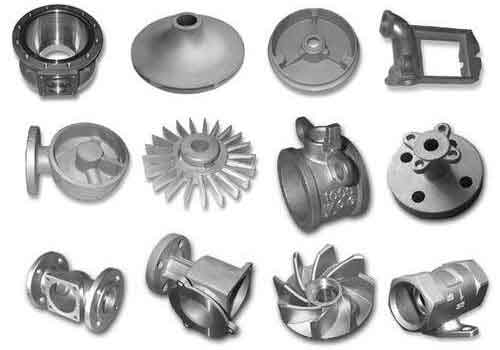Phenolic urethane resin sand, also known as the Pep-set process, is widely used in sand casting parts due to its high production efficiency, excellent surface quality, and low crack sensitivity. However, dispersed pinhole defects often appear on cast surfaces, especially under low-temperature conditions. This article systematically analyzes the root causes and proposes practical solutions to improve sand mixing uniformity, fundamentally addressing this issue.
1. Characteristics of Phenolic Urethane Resin Sand
The binder system consists of three components:
– Part I: Benzyl ether-type phenolic resin
– Part II: Polymeric diphenylmethane diisocyanate (PMDI)
– Part III: Tertiary amine catalyst
The curing reaction between hydroxyl groups (-OH) in Part I and isocyanate groups (-NCO) in Part II follows:
$$
\text{ROH} + \text{R’NCO} \xrightarrow{\text{Catalyst}} \text{RNHCOOR’}
$$
Key advantages include:
– High usable time/strip time ratio (up to 75%)
– Simultaneous internal and external curing
– Wide adjustability of curing rates

2. Mechanism of Pinhole Formation
Typical pinhole defects in sand casting parts exhibit these characteristics:
– Diameter: 0.5–2 mm
– Internal carbon films
– Nitrogen gas entrapment signature
The nitrogen content (≈7%) in PMDI is the primary cause. Localized PMDI excess due to poor mixing leads to side reactions with moisture:
$$
\text{RNCO} + \text{H}_2\text{O} \rightarrow \text{RNHCOOH} \rightarrow \text{RNH}_2 + \text{CO}_2\uparrow
$$
Subsequent reactions generate urea derivatives and biurets, releasing nitrogen gas during metal pouring.
3. Critical Factors Affecting Sand Mixing Uniformity
| Parameter | Standard Value | Defect Trigger Range |
|---|---|---|
| Resin viscosity (25°C) | 180–220 mPa·s | >350 mPa·s |
| Mixing time | 90–120 s | <60 s |
| Sand temperature | 15–35°C | <10°C |
| LOI variation | <±2% | >±3.5% |
4. Optimization Strategies for Sand Casting Parts
4.1 Equipment Modification
Enhanced mixer performance through:
– Rotational speed increase: 700 → 900 rpm
– Blade quantity: +50%
– Blade-wall clearance: 6 → 4 mm
| Mixer Type | LOI Variation | Tensile Strength (24h) |
|---|---|---|
| Original | 3.66% | 1.10–1.25 MPa |
| Modified | 1.74% | 1.28–1.35 MPa |
4.2 Resin System Optimization
Low-viscosity resin (NP-6065/NP-6035) shows superior performance:
$$
\eta_{\text{NP-101H}} = 2180 \times e^{-0.085T},\ \eta_{\text{NP-6065}} = 1420 \times e^{-0.092T}
$$
Where \( T \) = temperature (°C)
| Resin Type | Viscosity at 10°C | LOI Variation |
|---|---|---|
| NP-101H/102H | 540 mPa·s | 5.51% |
| NP-6065/6035 | 320 mPa·s | 2.01% |
4.3 Process Parameter Adjustment
Recommended parameters for sand casting parts:
| Factor | Winter | Summer |
|---|---|---|
| Mixing time | 180 s | 120 s |
| Sand preheat | 25–30°C | Ambient |
| Resin ratio (I:II) | 65:35 | 55:45 |
5. Industrial Verification
Field tests on valve castings (HT250, 25 kg/piece) demonstrated:
| Improvement Measure | Pinhole Density | Rejection Rate |
|---|---|---|
| Baseline | 32/cm² | 47% |
| Mixer upgrade | 4/cm² | 6% |
| Low-viscosity resin | 1/cm² | 1.2% |
The nitrogen content in sand casting parts decreased from 0.018% to 0.005% after optimization, effectively eliminating gas-forming sources.
6. Conclusion
For phenolic urethane resin sand casting parts production:
1. Sand mixing uniformity directly determines nitrogen distribution homogeneity
2. Equipment modification reduces LOI variation by 52.4%
3. Low-viscosity resins decrease viscosity-temperature dependence by 41%
4. Winter protocols require ≥15°C sand temperature and extended mixing
These solutions have been successfully implemented in mass production of automotive and hydraulic components, achieving consistent pinhole-free sand casting parts with surface roughness ≤Ra 12.5 μm.
